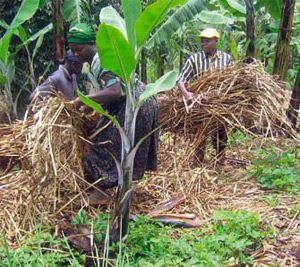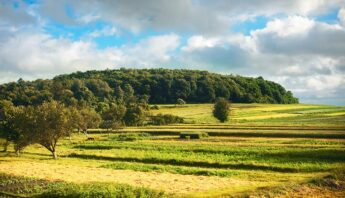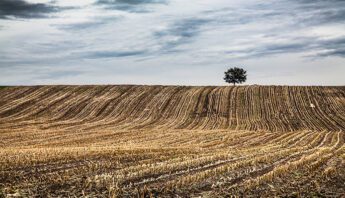This week our office is a-buzz with plans to join 350.org and thousands of people from more than 180 countries around the world in a Global Work Party to push back climate change. Some of us will be on a Food Justice Bike Tour in Oakland; others will be digging in at local community gardens in our neighborhoods. The thousands of actions that have been planned (over 6,800 so far) prove that the global community is ready to act, with or without leadership from our elected officials.
What’s at stake is heart-stopping for those who can bare to face it. Two weeks ago, more news came out about our planet’s rapidly melting sea ice. “Arctic summer sea ice cover is in a death spiral. It’s not going to recover,” said Mark Serreze, director of the National Snow and Ice Data Center in Boulder, Colorado. The implications are catastrophic for human civilization. Already some island countries are facing nightmare scenarios with entire populations seeking relocation. Increasing severity and frequency of extreme weather events (drought, fires, hurricanes, floods) are wreaking havoc on farmers’ and pastoralists’ livelihoods from wheat producers in Russia to cattle herders in Kenya.
Less covered in the media is the fact that the severity of climate change impacts has a lot to do with policies put into place by governments, driven not infrequently by narrow self-interest of private sector actors (recent food protests in Mozambique have now been traced to Russia’s 2007 privatization of its forests). Industrial agriculture, for its part, is responsible for one third of total global greenhouse gas emissions. Much of this impact stems from global deforestation and conversion of grassland to intensive commodity crop or livestock production, that ultimately feeds corporations, not people. Another factor is the farming sector’s heavy reliance on petrochemical inputs — particularly synthetic nitrogen fertilizer, which is a primary source of climate-warming nitrous oxide pollution. Nitrous oxide is a greenhouse gas with 296 times the global warming impact of carbon dioxide. In addition to exacerbating climate change and fostering energy-dependency, farming that relies on chemical fertilizers and pesticides depletes the soil, making rural communities more vulnerable to the consequences of climate change.
The good news: while agriculture is a contributor to greenhouse gas emissions, it has enormous potential to mitigate emissions. That means that we have the ability to transform agriculture from being part of the problem to being part of the solution. Agroecological farming provides one of the most robust ways to mitigate (or slow) climate change. This is due in part to the fact that soil is one of the world’s great carbon sinks. And if we cultivate nitrogen use efficiency with restorative, non-chemically reliant soil management practices, farming can radically reduce its footprint. Regenerative organic farming — whether adapted to conditions in western India or western Kansas — sequesters carbon in fertile, humus-rich soil, reduces nitrous oxide (by eliminating use of chemical fertilizers) and lowers methane (through well managed pastures and the activity of a healthy soil microbial community.)
 Agroecological farming also builds ecologically resilient systems that can better withstand the stresses of climate change. One of my favorite examples comes from Central America, where small-scale farmers using agroecological methods were better prepared to withstand the disastrous effects of Hurricane Mitch than conventional farmers. Guatemalan, Honduran and Nicaraguan farmers who had been planting trees and diverse crops along hillside contours and building soil organic matter retained more topsoil, field moisture and vegetation, and faced fewer crop and economic losses than did conventional farmers in the area. A continent away, Ugandan banana farmers are integrating time-tested Indigenous practices with new bio-intensive farming techniques that are improving their ability to cope with increasingly irregular rainfall. Back home, North Dakota farmers are planting perennial grasses and legumes to conserve soil and water and developing state of the art crop rotation systems—these practices saved them from one of the severest droughts on record, when neighboring conventional fields simply withered.
Agroecological farming also builds ecologically resilient systems that can better withstand the stresses of climate change. One of my favorite examples comes from Central America, where small-scale farmers using agroecological methods were better prepared to withstand the disastrous effects of Hurricane Mitch than conventional farmers. Guatemalan, Honduran and Nicaraguan farmers who had been planting trees and diverse crops along hillside contours and building soil organic matter retained more topsoil, field moisture and vegetation, and faced fewer crop and economic losses than did conventional farmers in the area. A continent away, Ugandan banana farmers are integrating time-tested Indigenous practices with new bio-intensive farming techniques that are improving their ability to cope with increasingly irregular rainfall. Back home, North Dakota farmers are planting perennial grasses and legumes to conserve soil and water and developing state of the art crop rotation systems—these practices saved them from one of the severest droughts on record, when neighboring conventional fields simply withered.
The creativity and ingenuity of small-scale farmers developing planet-cooling agroecological techniques around the world gives me hope that we can turn our agricultural systems around yet.








